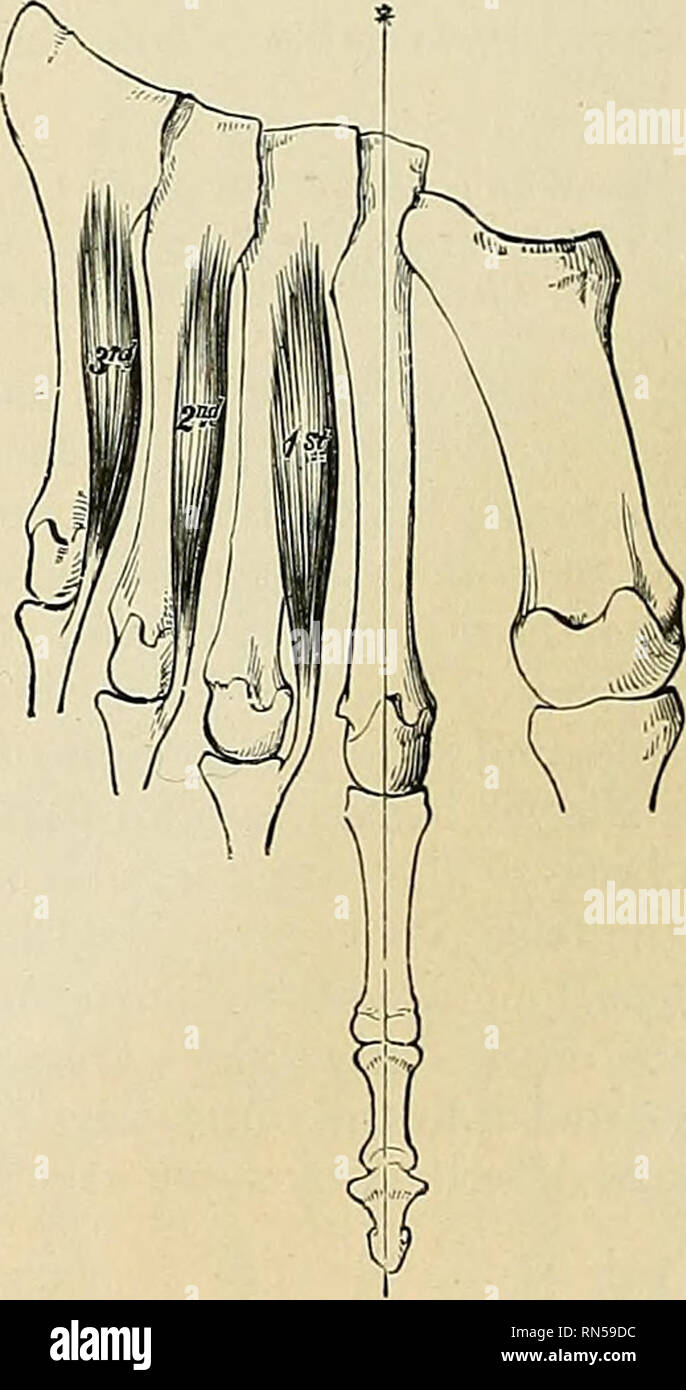. Anatomy, descriptive and applied. Anatomy. Fig. 399.—The Dorsal interossei. Left foot. The line marked by an * is that from which abduction is performed. Fig. 400.—The Plantar interossei. Left foot. The line marked by an * is that to which adduction is made. same toe outward; the third draws the third toe, and the fourth draws the fourth toe, in the same direction. Like the Interossei in the hand, they also help to flex the proximal phalanges and to extend the two terminal phalanges. The Abductor hallucis abducts the great toe from the others, and also flexes the proximal phalanx of this toe

Image details
Contributor:
Library Book Collection / Alamy Stock PhotoImage ID:
RN59DCFile size:
7.1 MB (245.6 KB Compressed download)Releases:
Model - no | Property - noDo I need a release?Dimensions:
1149 x 2175 px | 19.5 x 36.8 cm | 7.7 x 14.5 inches | 150dpiMore information:
This image is a public domain image, which means either that copyright has expired in the image or the copyright holder has waived their copyright. Alamy charges you a fee for access to the high resolution copy of the image.
This image could have imperfections as it’s either historical or reportage.
. Anatomy, descriptive and applied. Anatomy. Fig. 399.—The Dorsal interossei. Left foot. The line marked by an * is that from which abduction is performed. Fig. 400.—The Plantar interossei. Left foot. The line marked by an * is that to which adduction is made. same toe outward; the third draws the third toe, and the fourth draws the fourth toe, in the same direction. Like the Interossei in the hand, they also help to flex the proximal phalanges and to extend the two terminal phalanges. The Abductor hallucis abducts the great toe from the others, and also flexes the proximal phalanx of this toe. And in the same way the action of the Abductor minimi digiti is twofold—as an Abductor of this toe from the others, and also as a Flexor of the prox- imal phalanx. The Adductors are the Plantar interossei, the Adductor obliquus hallucis, and the Adductor transversus hallucis. The Plantar interosseous muscles adduct the third, fourth, and fifth toes toward the imaginary line passing through the second toe, and by means of their inser- tion into the aponeurosis of the Extensor tendon they, with the Dorsal interossei, flex the prox- imal phalanges and extend the two terminal phalanges. The Adductor obliquus hallucis is chiefly concerned in adducting the great toe toward the second one, but also assists in flexing this toe. The Adductor transversus hallucis approximates all the toes, and thus increases the curve of the transverse arch of the metatarsus. The Flexors are the Flexor brevis digitorum, the Flexor accessorius, the Flexor brevis hallucis, the Flexor brevis minimi digiti, and the Lum- bricales. The Flexor brevis digitorum flexes the second phalanges upon the first, and, con-. Please note that these images are extracted from scanned page images that may have been digitally enhanced for readability - coloration and appearance of these illustrations may not perfectly resemble the original work.. Gray, Henry, 1825-1861; Spitzka, Edward Anthony, 1876-1922. Philadelphia,